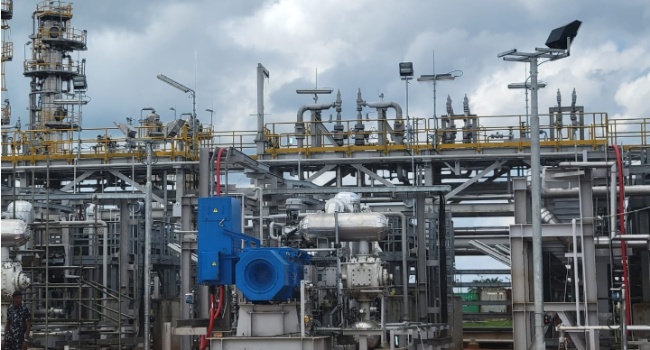The National Bureau of Statistics (NBS) says Nigeria’s inflation rate rose to 33.69 percent in April, as prices of food and non-alcoholic beverages soared.
The NBS shared the inflation data in its consumer price index (CPI) report on Wednesday.
“Looking at the movement, the April 2024 headline inflation rate showed an increase of 0.49% points when compared to the March 2024 headline inflation rate,” the NBS said.
“On a year-on-year basis, the headline inflation rate was 11.47% points higher compared to the rate recorded in April 2023, which was 22.22%.
Advertisement
“This shows that the headline inflation rate (year-on-year basis) increased in the month of April 2024 when compared to the same month in the preceding year (i.e., April 2023).
“Furthermore, on a month-on-month basis, the headline inflation rate in April 2024 was 2.29%, which was 0.73% lower than the rate recorded in March 2024 (3.02%).
“This means that in the month of April 2024, the rate of increase in the average price level is less than the rate of increase in the average price level in March 2024.”
Advertisement
NBS said the top five contributors to the increase in inflation rate are food and non-alcoholic beverages, housing, water, electricity, gas and other fuel, clothing and footwear, transport, as well as furnishings, household equipment and maintenance.
The bureau said on a year-on-year basis, the urban inflation rate rose to 36 percent in April, “which was 12.61% points higher compared to the 23.39% recorded in April 2023”.
“On a month-on-month basis, the Urban inflation rate was 2.67% in April 2024, this was 0.50% points lower compared to March 2024 (3.17%),” NBS said.
Also, NBS said the rural inflation rate in April was 31.64 percent on a year-on-year basis, compared to the 21.14 percent recorded in April 2023.
Advertisement
On a month-on-month basis, the bureau said the rural inflation rate in April was 1.92 percent, falling below the 2.87 percent reported in March.
PRICES OF BREAD, GARRI DRIVE FOOD INFLATION RATE UP
NBS said food inflation rose to 40.53 percent in April, compared to the 24.61 percent reported in the same month last year — indicating an increase of 15.92 percent points.
The bureau said millet flour, garri, bread, wheat flour prepacked, semovita, coconut oil, palm kernel oil, vegetable oil, yam tuber, water yam, and cocoyam, contributed to the year-on-year increase in the food inflation rate.
Advertisement
Other contributors are dried fish Sadine, catfish dried, mudfish dried, beef head, beef feet, liver, frozen
chicken, mongo, banana, grapefruit, Lipton tea, Bournvita, and Milo.
However, on a month-on-month basis, NBS said the “food inflation rate in April 2024 was 2.50%, which shows a 1.11% decrease compared to the rate recorded in March 2024 (3.62%)”.
Advertisement
NBS said the fall in food inflation on a month-on-month basis was caused by a decline in the rate of increase in the average prices of Yam, Water Yam, Irish Potatoes (under Potatoes, Yam & Other Tubers
Class), Beer, Local Beer (under Tobacco Class), Milo, Bournvita, Nescafe (under Coffee, Tea, and Coco Class), Groundnut Oil, Palm Oil (under Oil and Fats Class)”.
Other food items mentioned are egg, fresh milk, powered milk, tin milk, soft drinks, Malt Guinness, Coco-cola, Spirit (Local Production), Chelsea, Seaman Schnapps, wine and fruit, water melon, pineapple, banana, and pawpaw.
Advertisement
Also, NBS said on a year-on-year basis, the food inflation rate was highest in Kogi (48.62 percent), Kwara (46.73 percent), Ondo (45.87 percent), while the slowest rise was in Adamawa (33.61 percent), Bauchi (33.85 percent) and Nasarawa and (34.03 percent).
However, on a month-on-month basis, food inflation rate was highest in Lagos (4.74 percent), Edo (4.06 percent), and Yobe (3.99 percent), while the slowest rise was reported in Kano (0.47 percent), Adamawa (0.98 percent) and Zamfara (1.50 percent).
Advertisement
Add a comment






